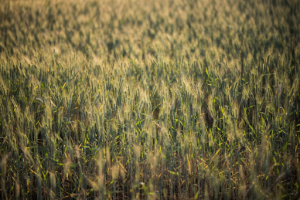introduction
Cereal rye is a powerful cover crop that helps farmers protect and improve their soil. By planting cereal rye during the off-season, farmers add essential nutrients to the soil, prevent erosion, and keep weeds under control. This crop grows thickly, covering the ground and stopping it from washing away in heavy rains.
Choosing the right cereal rye variety is important to get the most benefits. Different varieties can be matched to specific soil types and weather conditions, helping farmers keep moisture in the soil and prevent pests. By selecting the best cereal rye variety, farmers are setting up their main crops, like corn or soybeans, for better growth and higher yields. Learning more about cereal rye can lead to healthier fields and better harvests year after year.
Cereal Rye as a Cover Crop in Ohio
In Ohio, cereal rye is a popular cover crop that helps farmers protect their fields and improve soil health. When planted after the main harvest, cereal rye grows quickly, forming a thick layer that covers the soil. This cover crop helps prevent erosion by holding soil in place, even during heavy rains. It also keeps nutrients in the ground that might otherwise wash away, making the soil healthier for future crops.
Choosing the right cereal rye variety is important for Ohio’s specific soil and weather conditions, helping farmers maximize cover crop benefits like reducing weed growth and saving water. By picking the best variety, farmers set the stage for a strong start in spring, whether they plant corn, soybeans, or other main crops. Learning about cereal rye as a cover crop in Ohio can lead to healthier soils, higher crop yields, and more sustainable farming practices year after year.
Cereal Rye as a Cover Crop

Cereal rye is an excellent cover crop that farmers use to keep their soil healthy and strong. Planted after the main crops, like corn or soybeans, cereal rye grows quickly to cover the soil, which helps prevent erosion and keeps nutrients from washing away during rain. One of the biggest benefits of cereal rye is its ability to reduce weeds, creating a cleaner field for the next planting season. Different varieties of cereal rye are available, allowing farmers to pick the best type for their soil and weather. Choosing the right variety means they can maximize cover crop benefits, like moisture retention and pest control. This helps their main crops grow better and produce more food. By understanding how cereal rye works as a cover crop, farmers can make smart choices that protect the environment and improve crop yields year after year, creating a sustainable farming cycle.
Will a cereal rye cover crop suppress your weeds
A cereal rye cover crop is a natural way to help farmers manage weeds in their fields. When planted after a main crop, cereal rye grows thick and spreads out over the soil, creating a strong cover that blocks sunlight from reaching weed seeds. Without sunlight, these weed seeds can’t grow, making it hard for weeds to take over the field.
This natural method of weed suppression reduces the need for chemical sprays, keeping the soil and nearby environment healthier. Choosing the right cereal rye variety is important to maximize cover crop benefits, especially for weed control. Some varieties grow even thicker and faster, offering extra protection against weeds. By using cereal rye as a cover crop, farmers create a safer, healthier space for their main crops, like corn or soybeans, to thrive in the next season, helping to ensure a more productive and sustainable farming system.
Growing cereal rye in Victoria
Growing cereal rye in Victoria offers many benefits to local farmers, helping improve soil health and crop yields. This hardy cover crop grows well in Victoria’s diverse climates, thriving even in cooler months. When planted after the main harvest, cereal rye quickly covers the soil, protecting it from erosion and keeping nutrients locked in for the next growing season. Farmers in Victoria find that cereal rye’s thick growth is especially good at reducing weeds, blocking sunlight from reaching weed seeds.
Choosing the right cereal rye variety is important for maximizing cover crop benefits, as some varieties are better suited to Victoria’s soil types and weather patterns. By picking a variety that matches their fields, farmers can also improve soil moisture and reduce the need for extra weed control. Growing cereal rye helps create stronger, healthier fields that are ready to support the main crops, like wheat or canola, in the spring.
Cereal Rye as a Food Plot Crop
Cereal rye is an excellent choice for a food plot crop, attracting wildlife and improving soil health at the same time. This hardy grain grows quickly, covering the ground with thick, green shoots that provide a food source for animals like deer and turkeys. Its dense growth also helps protect the soil from erosion and keeps moisture locked in, which benefits the land.
When planted as a food plot, cereal rye works as a natural cover crop that reduces weeds by shading them out and adding nutrients to the soil as it decomposes. Choosing the right cereal rye variety can maximize these benefits, helping wildlife find food while boosting soil health for future plants. Cereal rye is easy to grow in many regions, making it a favorite for hunters and wildlife enthusiasts who want to support local ecosystems and create sustainable feeding areas year after year.
conclusion
In conclusion, using cereal rye as a cover crop brings many benefits for both farmers and the land. By planting cereal rye, farmers can protect soil from erosion and keep nutrients locked in, ready for the next crop season. This thick-growing plant also shades out weeds naturally, reducing the need for chemical sprays and helping to keep the environment healthy.
Choosing the best cereal rye variety is important for maximizing cover crop benefits. Different types of cereal rye may suit local soil and weather conditions better, making it easier for main crops, like corn or soybeans, to grow strong and produce more. With cereal rye, farmers not only improve current crop yields but also build healthier fields for the future. This sustainable approach to farming lets them work in harmony with nature and ensures better harvests year after year.

